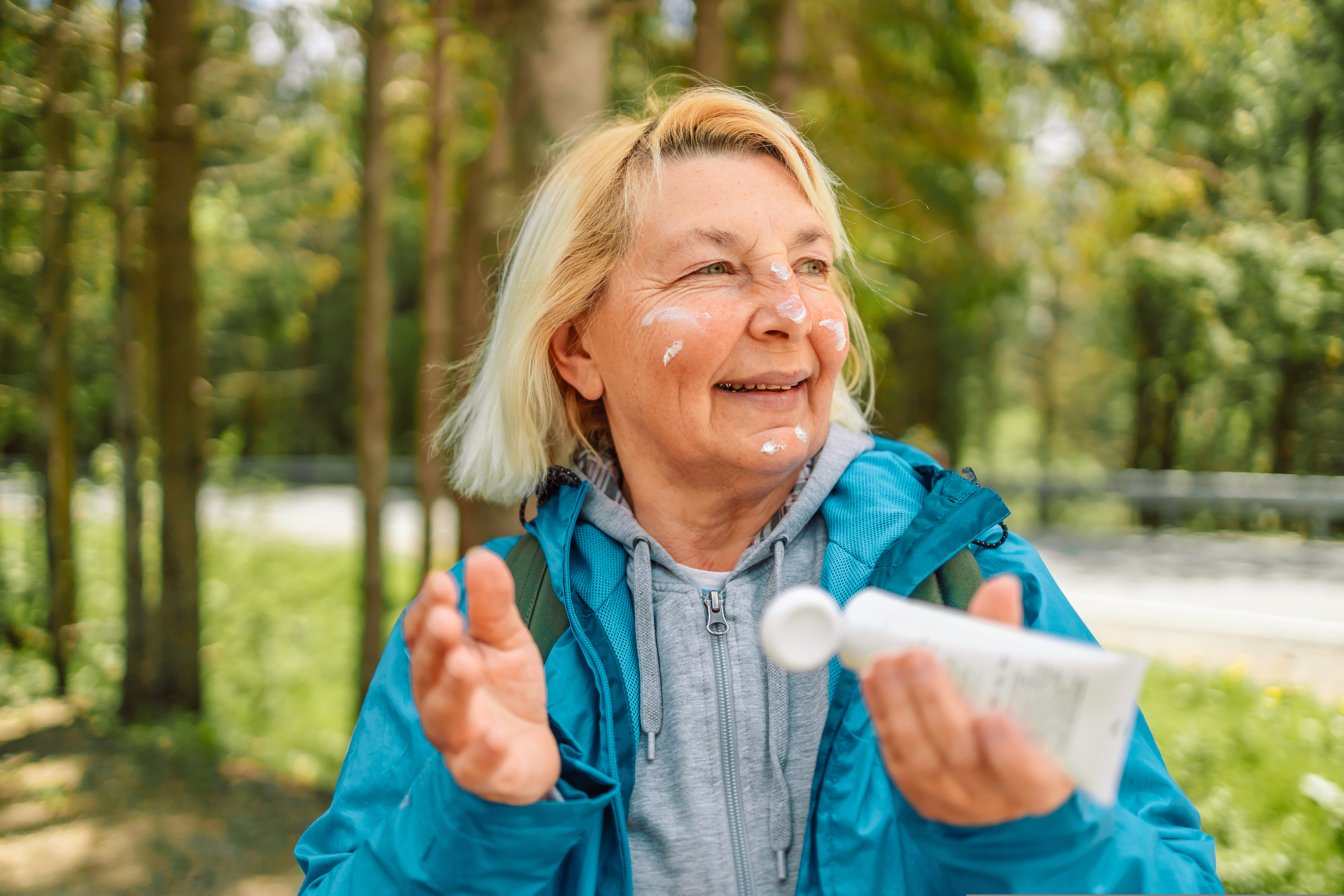The summer months come with beautiful weather and the temptation to sit outside in the sun all day long. While it’s great to enjoy being outside this season, it is also very important to understand how damaging the sun can be to one’s skin without the protection of SPF. Using SPF protection is easy to do and does not prevent you from enjoying the many benefits of the sun such as boosting Vitamin D and serotonin.
Melanoma is the deadliest type of skin cancer and is among the most common cancer types in the US, affecting 1,413,976 people in 2020. It is estimated that 40–50% of people over the age of 65 who are white will develop a form of skin cancer. People with darker skin are still susceptible to skin cancer, but have lower chances of developing it. These chances can be reduced with the proper use and application of sunscreen products. Unfortunately, many people fail to recognize the importance of using sunscreen or are simply unaware of its benefits.
The use of sunscreen is critical in protecting the skin from harmful UV rays that can cause skin cancer, premature aging, and other skin-related problems. No matter what type of skin you have, everyone exposed to the sun without sunscreen is more at risk for skin damage and skin-related diseases, as well as premature aging of the skin. As older adults age, their skin becomes thinner and more vulnerable to sun damage. It is important to regularly check and be aware of any new spots, marks, or moles on the skin as we age because damage that was done to the skin in one’s twenties to forties is likely to show up at least 20 years later. Too much unprotected exposure to the sun can also cause scaly patches called solar keratoses and new or changing moles, freckles or blemishes, and these require frequent observation and screening. These are all signs of possible sun damage that may become cancerous. It is recommended to visit a dermatologist once a year or 3-6 months if you have a history of melanoma in your family.
If there is a skin cancer diagnosis, the most likely type in older adults is BCC (Basal Cell Carcinoma) from the cumulative time spent in the sun over the years. Options for treatment, such as surgery or a topical solution, depend on the size and degree of the tumor or the severity of the cancer. If BCC is caught early and treated promptly there is a greater chance for it to be cured. This is why it is important to frequently check in with the dermatologist to catch anything as soon as it develops.
When using sunscreen, it is crucial to remember to reapply frequently when outdoors. The simple act of applying the lotion can save you from dealing with skin cancer in the coming years. Regularly applying SPF of at least 15 can reduce your risk of developing melanoma by 50%. This is crucial because once one has melanoma, it is frequently spread to other areas on the body.
There are many options to pick from such as sprays, lotions, and even sticks that can be kept in a small bag or purse for easy access to reapply throughout the day. This summer, prioritize finding a moment a day to apply SPF to the areas of your skin that will be exposed to the sun in order to help your future self and your skin. There is no simpler way to prevent skin cancer and promote healthy skin as one ages than applying sunscreen before going into the sunlight.
----------
Richard, E. G. (2022, July 1). All About Sunscreen, Why You Need It. How It Works For You. Skin Cancer Foundation. Retrieved April 25, 2023, from https://www.skincancer.org/skin-cancer-prevention/sun-protection/sunscreen/
Dang, J., et Al. (2020, September 15). Sunscreen application technique amongst patients with a history of skin cancer. Archives of Dermatological Research. Retrieved April 25, 2023.
----------

 Donation
Donation
